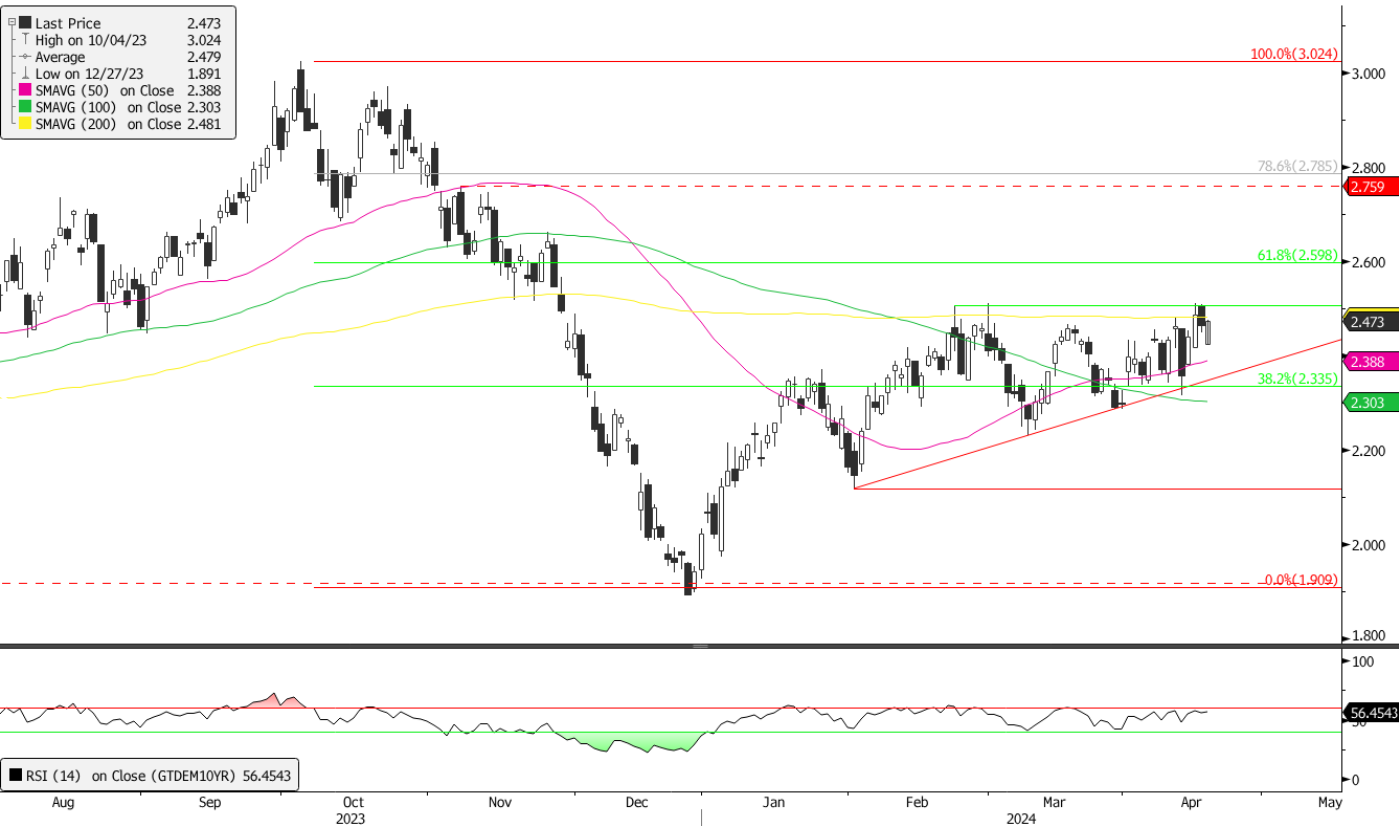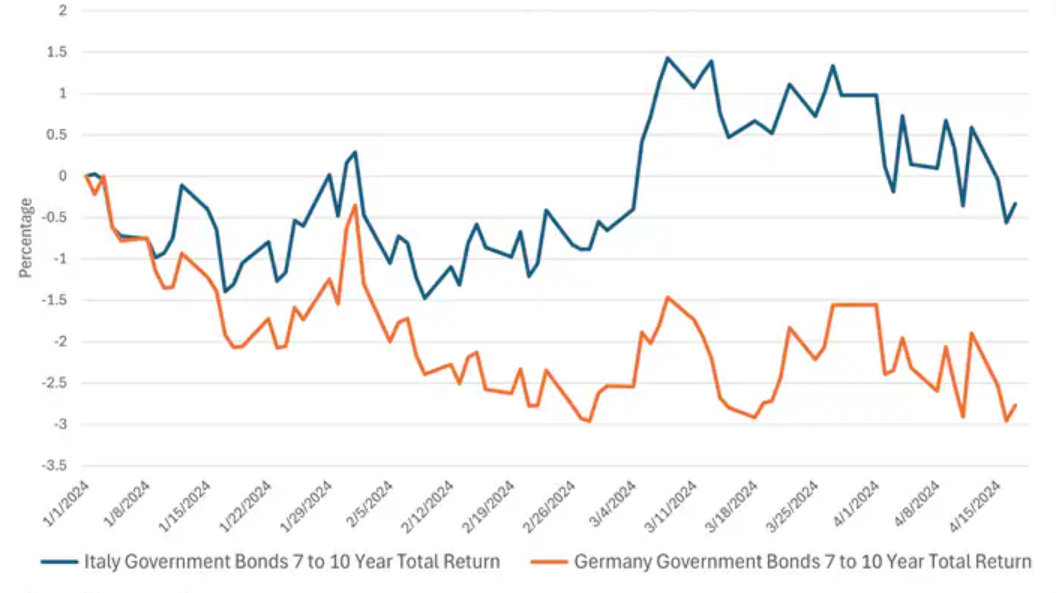Despite the European Central Bank's (ECB's) preparations to cut rates, European sovereign bonds continue to decline. This owes to a surge in commodity prices sparked by potential escalations in Middle East conflicts, hinting at sustained or even increased inflation in the latter half of the year.
Inflation plays a crucial role in bond performance. If it remains high, the chances of a bond bull rally are slim, as central banks would struggle to implement aggressive rate cuts. Expectations for Fed rate cuts in 2024 have dwindled from nearly six to less than two, while in Europe, they have decreased from almost seven to three.
Despite expectations that the ECB would be more aggressive in cutting interest rates than the Federal Reserve, this divergence hasn't halted the rise in bund yields. Starting the year at 2%, 10-year yields have climbed to nearly 2.5%, showing an upward trend that could push them to test resistance at 2.5% and potentially reach 2.75% if breached.
Several factors could drive bund yields higher
Slower progress in disinflation: With core inflation hovering around 3% in the eurozone, the ECB's real policy rate stands at approximately 100 basis points (bps). If inflation persists around this level, the ECB's room to cut rates to stimulate the long end of the yield curve would be limited.
Uncertainty surrounding the rate cut cycle: Policymakers have signalled their intent to cut rates in June but are managing expectations beyond that to prevent markets from anticipating aggressive cuts.
Concerns about a weak euro leading to a second wave of inflation: ECB President Christine Lagarde's recent remarks concerning the impact of currency fluctuations on inflation underscores this concern and should not be ignored. A weaker euro is good for European growth, but if it weakens too much it might provoke a rise in inflation. That will limit policymakers' ability to cut rates.
10-year bunds still offer an attractive risk-reward profile
Assuming a one-year holding period, yields would need to exceed 2.8% to result in a loss. Considering the potential for persistent inflation or economic recovery, the upside of such a position in the event of a market downturn or disinflationary trends cannot be ignored.
For instance, if 10-year bund yields were to drop from 2.46% to 1.46%, the position would yield an 11% upside.
Chart 1: 10-year bund yields

Source: Bloomberg, Saxo Bank
Italian government bonds present a compelling opportunity for investors
While 10-year bunds have declined by approximately 2% since the start of the year, Italian BTPs have remained stable. This outperformance can be attributed to the fact that Italian BTPs offer the highest yields among European sovereign bonds.
This high yield makes Italian BTPs attractive as a 'safe haven' asset if inflation persists, as they provide a stronger hedge against inflation.
Additionally, they would benefit from their correlation with the bunds in the event of heightened tensions in the Middle East.
Recent years have shown that higher-yielding fixed income securities, such as junk bonds, have demonstrated resilience in the face of high inflation.
Chart 2: Italian BTPs have been outperforming German bunds

Source: Bloomberg, Saxo Bank
Considering a one-year holding period, Italian BTPs offer an appealing risk-reward profile:
2-year Italian BTPs: yield 3.5%, with yields needing to exceed 12% to result in a loss.
10-year Italian BTPs: yield 3.9%, with yields needing to surpass 4.4% to result in a loss.
30-year Italian BTPs: yield 4.3%, with yields needing to surpass 4.7% to result in a loss.
Althea Spinozzi is head of fixed income strategy at Saxo Bank.




